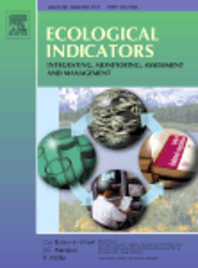
A new research paper Linking Earth Observation and taxonomic, structural and functional biodiversity: Local to ecosystem perspectives published in the journal Ecological Indicators looks at the ways in which earth observation (EO) techniques may provide a solution to overcome shortcomings in biodiversity monitoring by measuring entities of interest at different spatial and temporal scales.
Abstract:
Impacts of human civilization on ecosystems threaten global biodiversity. In a changing environment, traditional in situ approaches to biodiversity monitoring have made significant steps forward to quantify and evaluate BD at many scales but still, these methods are limited to comparatively small areas. Earth observation (EO) techniques may provide a solution to overcome this shortcoming by measuring entities of interest at different spatial and temporal scales.
This paper provides a comprehensive overview of the role of EO to detect, describe, explain, predict and assess biodiversity. Here, we focus on three main aspects related to biodiversity taxonomic diversity, functional diversity and structural diversity, which integrate different levels of organization molecular, genetic, individual, species, populations, communities, biomes, ecosystems and landscapes. In particular, we discuss the recording of taxonomic elements of biodiversity through the identification of animal and plant species. We highlight the importance of the spectral traits (ST) and spectral trait variations (STV) concept for EO-based biodiversity research.
Furthermore we provide examples of spectral traits/spectral trait variations used in EO applications for quantifying taxonomic diversity, functional diversity andstructural diversity. We discuss the use of EO to monitor biodiversity and habitat quality using differ-ent remote-sensing techniques. Finally, we suggest specifically important steps for a better integrationof EO in biodiversity research.EO methods represent an affordable, repeatable and comparable method for measuring, describing,explaining and modelling taxonomic, functional and structural diversity. Upcoming sensor developmentswill provide opportunities to quantify spectral traits, currently not detectable with EO, and will surelyhelp to describe biodiversity in more detail. Therefore, new concepts are needed to tightly integrate EOsensor networks with the identification of biodiversity. This will mean taking completely new directionsin the future to link complex, large data, different approaches and models.
Original reseach:
A. Lausch, L. Bannehr, M. Beckmann, C. Boehm, H. Feilhauer, J.M. Hacker, M. Heurich, A. Jung, R. Klenke, C. Neumann, M. Pause, D. Rocchini, M.E. Schaepman, S. Schmidtlein, K. Schulz, P. Selsam, J. Settele, A.K. Skidmore, A.F. Cord, Linking Earth Observation and taxonomic, structural and functional biodiversity: Local to ecosystem perspectives, Ecological Indicators, Volume 70, November 2016, Pages 317-339, ISSN 1470-160X, http://dx.doi.org/10.1016/j.ecolind.2016.06.022




 RSS news
RSS news Print this article
Print this article
